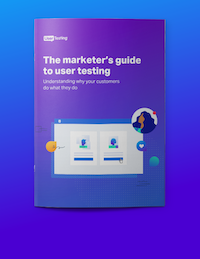Avoid marketing snafus by constantly gathering customer insights

Dove has long extended its relevance, not to mention its product suite, through an initially novel, now enduring stance on female empowerment through its "Real Beauty" campaign. Yet, it recently crossed beyond controversial with the release of a questionable Facebook ad. The ad, showing an African American woman removing a brown shirt and transforming into a Caucasian woman, was swiftly pulled when furor spread on social media. The company later wrote on its Facebook page, “Dove is committed to representing the beauty of diversity. In an image we posted this week, we missed the mark in thoughtfully representing women of color and we deeply regret the offense that it has caused.” A New York Times article on this misstep points out that Dove is not the first (and unlikely to be the last) company to make an egregious miscalculation in advertising. In fact, since the Dove incident, Kellogg’s was called out for having racist imagery on its Corn Pops cereal boxes. Similarly, there's a long list of retailers that have pulled products from shelves, including a bag that featured a poor choice of font and girl’s clothing that perpetuates dangerous, sexist stereotypes and undermines interest in and the pursuit of STEM.
Extend customer insights beyond product development
Marketing teams, especially at consumer packaged goods (CPG) companies, are some of the biggest proponents of customer research and interviews, including the use of focus groups for product development. Yet many marketers fail to integrate customer feedback into other vital aspects of their go-to-market plans, including messaging, advertising, promotions and offers. Beyond product ideation and development, customer insights can help marketing teams overcome silos, biases and other challenges, to ensure that campaigns and other GTM communications deliver the right message as intended.
1. Break through the marketing myopia
As marketers, it’s very easy to fall into myopia or tunnel vision that comes with marinating in ideas for too long. Whether it’s a campaign or a new product or even your company’s elevator pitch, messaging that is overly complicated or overly reductive, or just plain weird or confusing, can undermine even the best-laid plans and most promising opportunities. Getting feedback from existing customers, employees (especially those in the field), and target audiences is a good way to get “a fresh pair of eyes” to uncover potential landmines and generate new ideas. Additionally, getting insight into how people perceive your competitors’ branding, campaigns and products can yield constructive criticism and critical realizations to make necessary changes and take advantage of areas of opportunity.
2. Uncover unspoken beliefs or sensitivities
It’s common for beauty brands like Dove to encounter challenging decisions when it comes to products and the audiences they wish to serve. In particular, sensitivities have long existed regarding race, identity, beauty and skin color, especially in regions like Asia and Africa where skin bleaching is popular. Other incidents involving race have occurred. A social media campaign using #ninjaplease went terribly awry in 2012, with marketers seemingly unaware of the racial undertones of the phrase. Clothing retailer Abercrombie & Fitch pulled a line of t-shirts from shelves when Asian-Americans deemed them racist. In response to the 2002 incident, a PR representative responded, "We personally thought Asians would love this T-shirt." A common saying, “Never judge a man until you’ve walked a mile in his shoes,” champions seeing things from another’s point of view. While we should all aspire towards empathy, especially in today’s social and political climate, we also have to be realistic about impediments in reaching this goal—namely that people’s viewpoints are the products of their experiences and environments. Where possible, it is important to go beyond assumptions or best guesses and to directly engage customers and other audiences for insights into potentially delicate topics for an expanded understanding of their points of view.
3. Tread cautiously into trends and recent events
Connecting a brand with a recent event is often a way to stir the emotions of consumers and influence their behaviors. Probably the best examples of this are the Disney Super Bowl commercials. A football player, in the throes of celebrating their team’s Super Bowl victory, is approached and asked, “You’ve just won the Super Bowl. What are you going to do next?” The player then ebulliently exclaims, “I’m going to Disneyland!” Other brands have similarly aligned with events or causes, with varying outcomes. A Budweiser ad on the 10th anniversary of 9/11 was met with heartfelt praise. Meanwhile, a San Antonio mattress store created what has been described as the “most offensive commercial ever.” An iconic Coke ad from the 1970s literally sings out about unity and peace during a politically divisive time, while a more recent Pepsi ad featuring model Kendall Jenner was described as “tone-deaf.” The question becomes: when is it an homage and when is it a dishonest attempt to capitalize on emotions? And really the best way to answer these questions is to solicit feedback: to see when you’re too closely toe-ing a line and to get a response to the meme-worthy question, “Too soon?” Beyond this, engaging directly with customers helps marketers understand what’s hot (and what’s not), what customers care about and what trends are on the precipice of popularity—to enable brands to be the early bird that catches that worm. As marketers, we're responsible for many outcomes in the projects we undertake. We often have to simultaneously incite, excite and entice—drawing in interested parties and converting them into loyal customers. As we consider the many avenues and strategies we can utilize in establishing our brands and promoting our products and services, we must also constantly secure feedback from our customers, prospects, target audiences and partners to ensure that our words and promises measure up to their expectations.
Want to learn more?
If you’d like to learn more about how UserTesting can help you understand your customers through real-time human insights, contact us at support@usertesting.com.
Customer insights for marketers
Find out why customers do what they do so you can adjust your strategy to boost your conversion rates and improve your customer experience.







